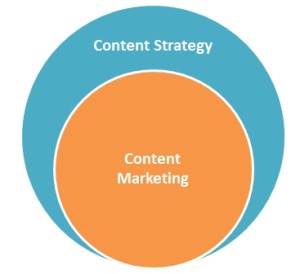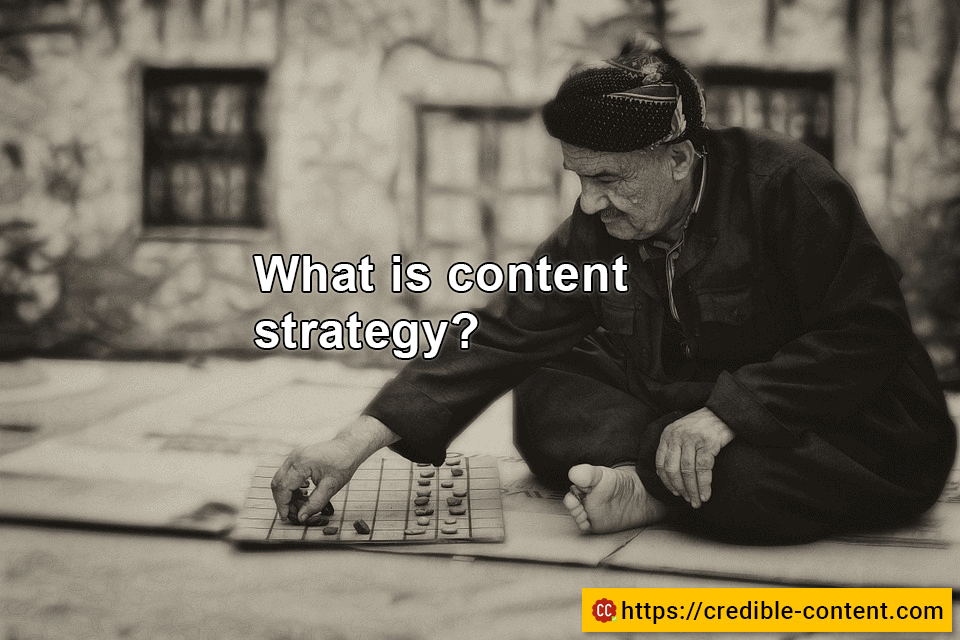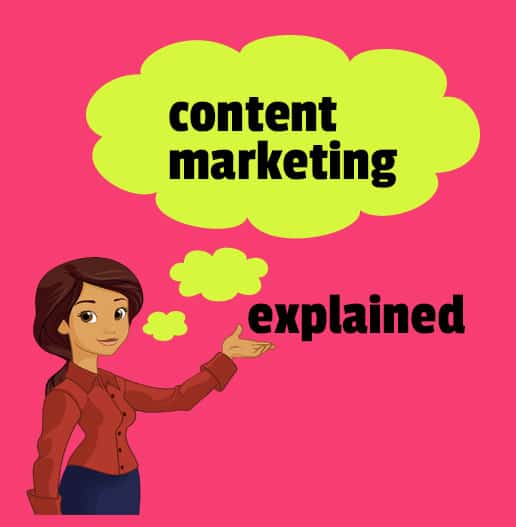
There was a time when I used to think that content marketing is a subset of content strategy, but now I believe that both content marketing and content strategy can be subsets and supersets of each other.
You cannot have a successful content marketing campaign without a content strategy, and a well-define content marketing campaign is an integral part of your content strategy.
So, if they are intertwined, what are the defining differences between content marketing and content strategy? What are the key differences?
In simple terms, the insights and data that you get through content strategy, you implement in content marketing. Content strategy gives your content marketing the needed direction. Without this direction, your content marketing turns haphazard and ineffective.
If content marketing consists of publishing regular content, content strategy is knowing what content to publish, what audience to target, and which platforms to use for publishing content.
As mentioned above, content strategy is based on the metrics and the insights that you obtain through analytics, observation, experimentation and third-party data.
Content strategy

What is content strategy?
As mentioned above, our actions must be well thought of if we want to achieve something. Here is what content strategy involves:
- Knowing what content to publish and distribute.
- Knowing who is your target audience and why?
- Clearly defining KPIs.
- Knowing how to obtain traffic and engagement data.
- Streamlining content publishing based on goals and insights.
- Zeroing in on the platforms that you will use to publish and distribute your content.
- Establishing an audience engagement policy.
- Figuring out which content type or format best suits your content marketing KPIs.
First, you need to know what is the purpose of publishing and distributing content and exactly why you need content marketing? How it can serve your business and help you promote your cause?
To be a successful communicator, you must know whom you’re going to communicate to. You should know your audience, you should know what they want, what they’re looking for, what their concerns are.
Data insight is a great power. When you set in motion your content marketing strategy, you will need to constantly analyze your data so that you can make timely changes.
You need a content writing and content publishing roadmap so that you remain focused and you always know what you’re going to published to cater to your core audience.
Merely publishing content doesn’t help you much these days. This is where content marketing comes in. You need to promote and broadcast your content so that it reaches the maximum number of people. For that you need to shortlist channels that you’re going to use to distribute your content, for example search engines, social networking websites like LinkedIn, Facebook, and Twitter.
You also need to constantly engage your audience. Unlike conventional marketing, content marketing involves two-way communication between you and your audience (your customers and clients). Without meaningful and regular engagement it’s difficult to establish a rapport and make yourself more relatable and identifiable.
Content can be of multiple formats and if you have limited budget, you cannot target all the existing formats. For example, you can have written content (content writing, etc.), videos, presentation slides on SlideShare, images on your own blog, Facebook and Pinterest, sketches, infographics and basically, everything that you can use to communicate data and ideas. You may like to do something like content writing or images in the beginning and later on start focusing on other formats of content too.
This basically sums up your content strategy.
Content marketing

Content marketing explained
This involves folding your sleeves and actually getting down to the grind.
Whatever steps you have listed in your content strategy document, you implement during content marketing. Interestingly, there is a reason why there is “marketing” in content marketing.
Yes, sure, you publish targeted content. But, merely publishing content doesn’t bring you success. You need to “market” that content – you need to promote your content so that maximum number of people can access it and are then drawn to your website or blog.
Marketing is a proactive activity. You need to take steps so that the visibility of your content increases. You improve your search engine rankings. You broadcast newsletter updates. You engage audiences on different social media platforms. You closely watch and follow trends and publish content to leverage them. You make sure that you stick to your content calendar.
Why is content marketing important? I mean, why not simply advertise and promote your business the way people have been doing for decades?
There is a reason why a greater number of businesses are adopting content marketing rather than sticking to the old ways of business promotion. People these days don’t like being sold to. They want you to gain their trust. This is done through publishing valuable content.
On the Internet (and in real life) it is not physically possible to interact with thousands of prospective customers and clients on daily basis. Your content on the other hand can do the job seamlessly.
Content marketing is also called inbound marketing. Inbound marketing means your prospective customers and clients come to your website on their own after accessing your content or while trying to access useful information. It is their decision. It is they who find your link somewhere, click the link, and come to your website.
Outbound marketing on the other hand is a traditional form of marketing where you interrupt people while they’re doing something else.
You assume that they are going to be thrilled at receiving your marketing message, whereas this is not the case. People are annoyed when you are urging them to buy from you while they want to watch their favorite movie, or read an interesting blog post, or watch an enchanting cat video. You’re interrupting them, and you’re not just interrupting them, you’re also urging them to part with their money on an item or service that they may need, but right now, psychologically, are not prepared to buy.
Through content marketing you are simply there. You solve their problems. You keep them engaged. You seed conversations. They become familiar to you. They become comfortable to your presence in their lives (or on their screens). The more familiar you become, the more they trust you.
Here is a good definition of content marketing from this Forbes article (slightly old)
Content marketing is a marketing technique of creating and distributing valuable, relevant, and consistent content to attract and acquire a clearly-defined audience – with the objective of driving profitable customer action.
What should a small business focus on, content marketing or content strategy?
Frankly, there is no use doing content marketing without content strategy. Without strategy, your content marketing is going to be haphazard. It will be like throwing darts in the darkness. You may succeed, or you may not succeed.
Creating a content strategy may seem intimidating in the beginning, but it is not. Even if you spend 3 hours every month strategizing your content marketing, or at least, this is what I think, especially if you’re a small business, it is more than enough.
What is strategy after all? It is being aware of your environment, analyzing your environment, and then controlling your actions accordingly, to reach your goal.
For example, a strategy has a swot analysis – your strengths, weaknesses, opportunities, and threats. You may already have good content you can leverage by reusing and repurposing. There may be many gaps you need to fill. There may be some really good and useful topics you can write and publish content on. How is your competition faring? What can you do to beat your competition?
Using your analytics data is also a part of your content strategy and based on that you can give a direction to your content marketing efforts. If you use Google Analytics, your dashboard tells you the type of traffic your content is attracting. Is this the right kind of traffic or you need different traffic?
If you’re thinking in these terms, you are already using content strategy to make your content marketing effective.




